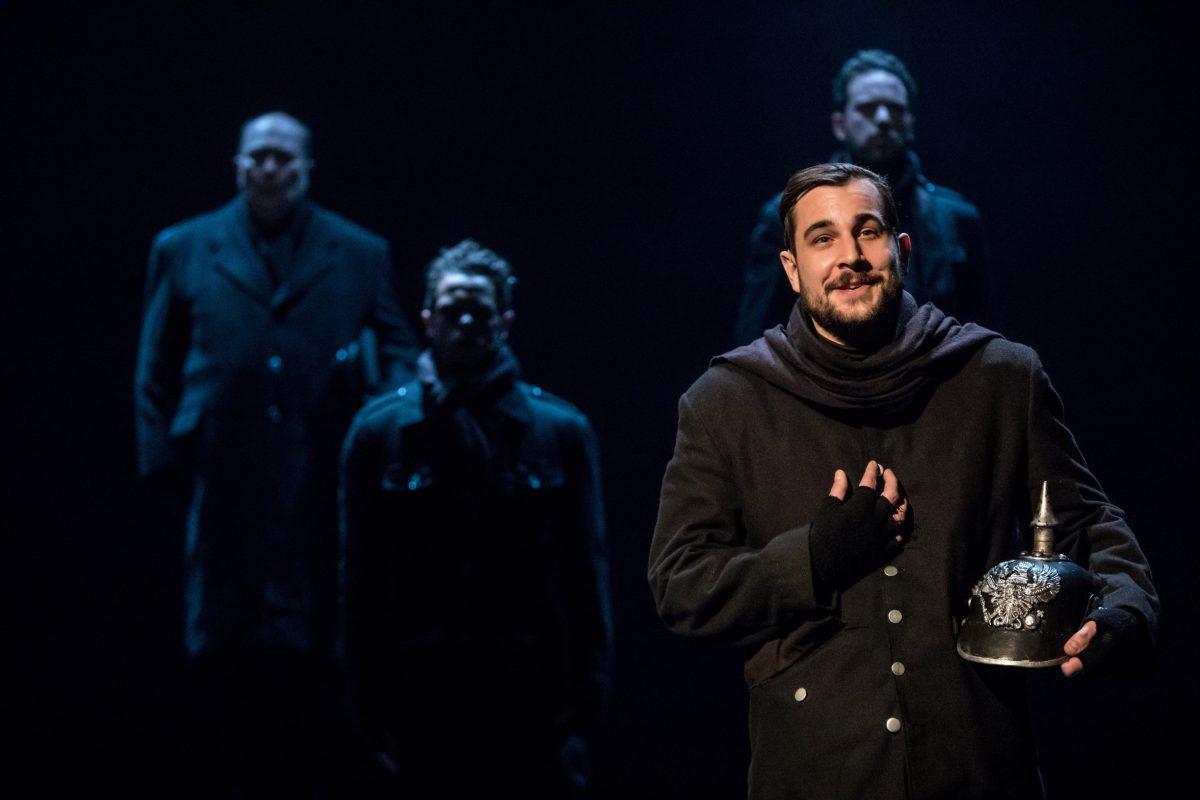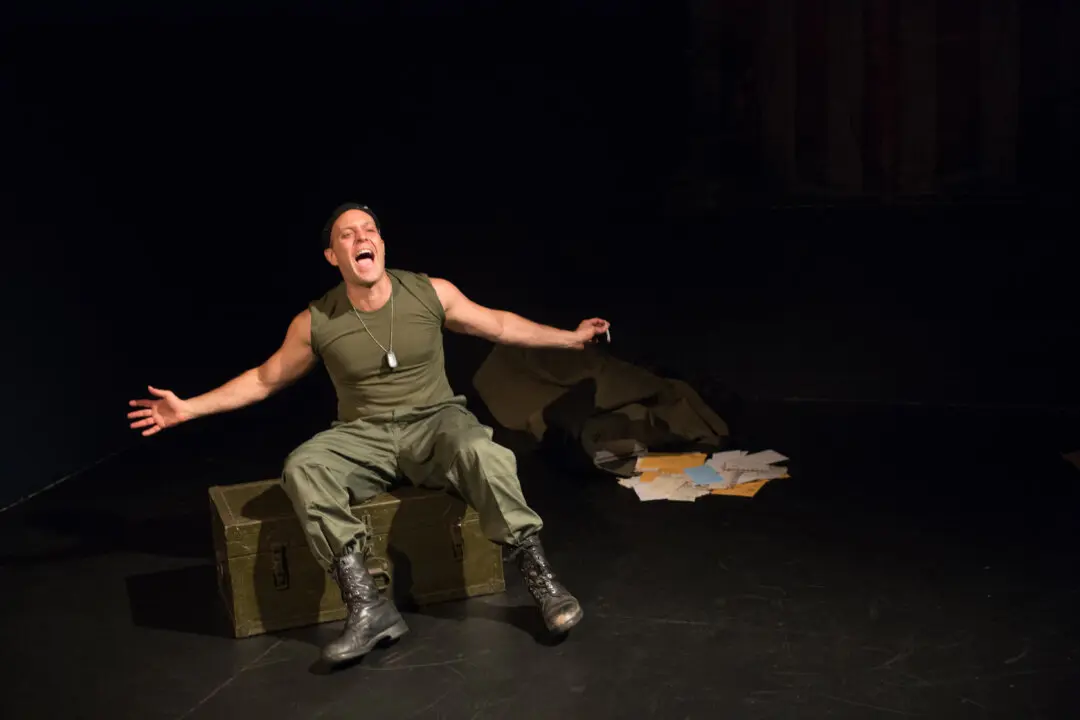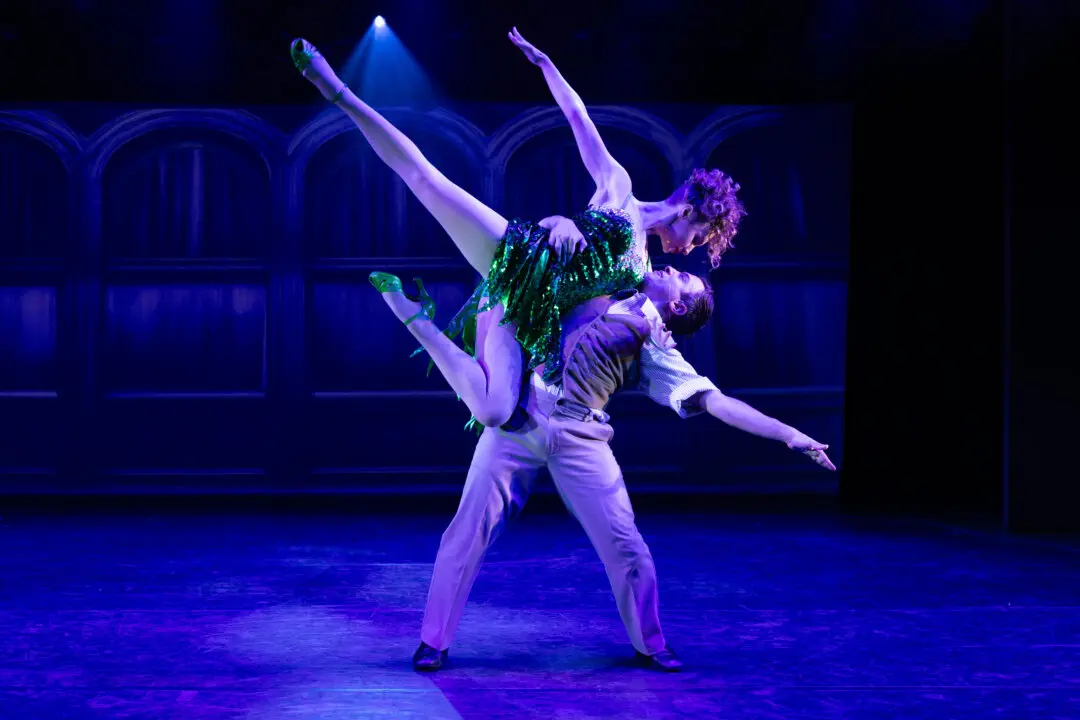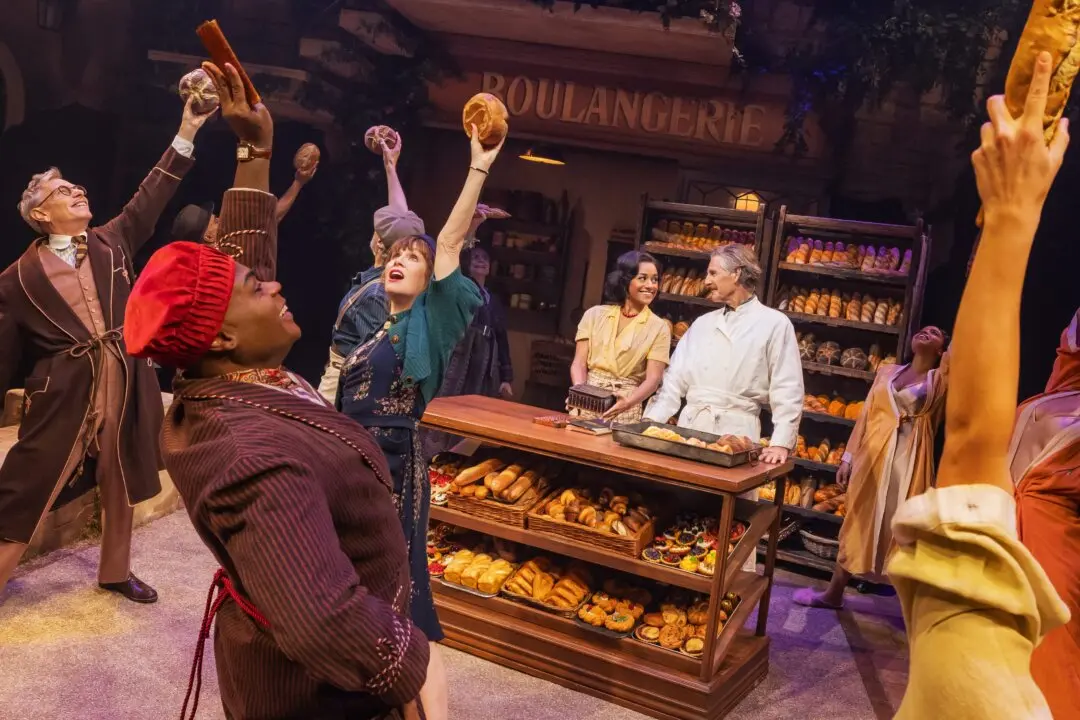NEW YORK—At the onset of Christmas 1914, an amazing thing happened on the Western Front of World War I. Soldiers from both sides of the battle came out of their trenches, walked into no man’s land, greeted each other, and basically put the war on hold. This event, which happened up and down the lines, although certainly not everywhere on the front, was completely spontaneous, without any mutual agreement or official approval.

Benjamin Dutcher (R) and the cast from "All Is Calm: The Christmas Truce of 1914." Dan Norman





